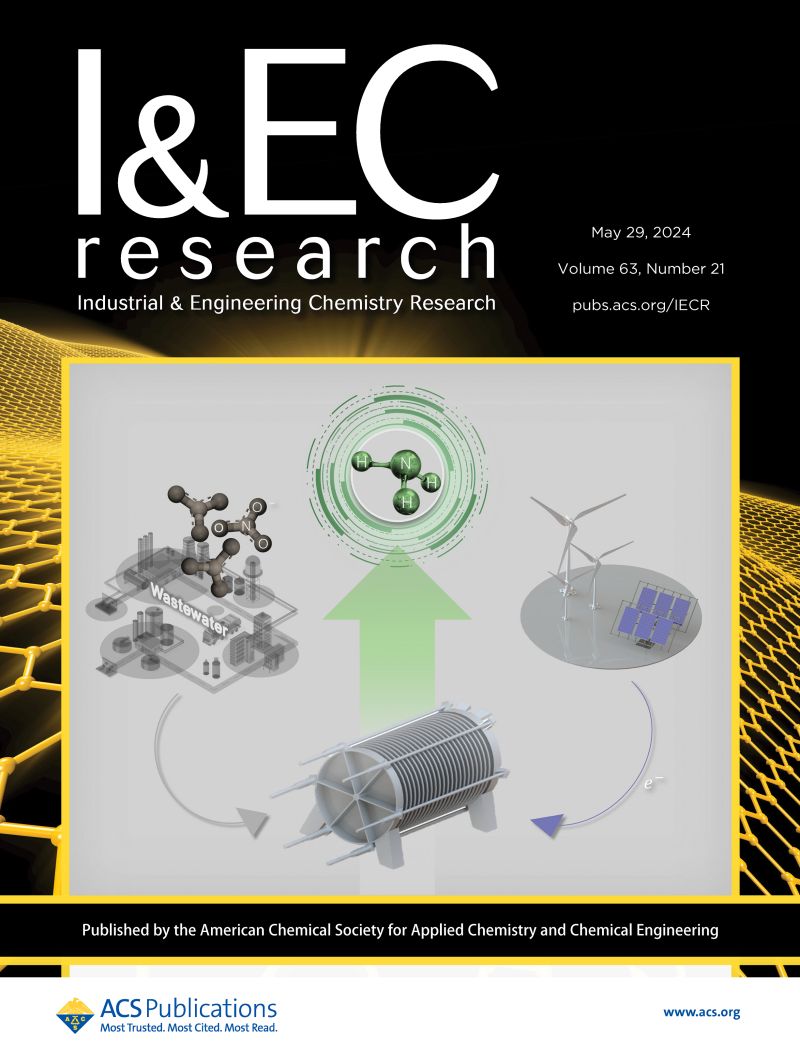浆泡柱反应器中 PET 加氢分解的建模与优化
IF 3.8
3区 工程技术
Q2 ENGINEERING, CHEMICAL
引用次数: 0
摘要
随着人们对聚对苯二甲酸乙二醇酯(PET)回收的兴趣日益增长,对PET氢解的研究已经扩大,但反应器设计研究仍然有限。本文提出了三相浆态泡塔反应器的数学模型,该模型的选择适合于高压和粘性条件。该模型使用流体动力学关联和基于gpu的优化求解器,模拟和优化反应堆性能。结果表明,粘度受聚合物分子量和溶剂比的影响,对PET转化率有重要影响。催化剂尺寸和进料比例也通过轴向分散、传质和反应动力学的变化显著影响转化。这些发现强调了优化粘度和其他反应器参数对提高PET氢解效率的重要性,支持更有效的工业回收策略。本文章由计算机程序翻译,如有差异,请以英文原文为准。

Modeling and Optimization of PET Hydrogenolysis in a Slurry Bubble Column Reactor
As interest in polyethylene terephthalate (PET) recycling grows, research into PET hydrogenolysis has expanded, yet reactor design studies remain limited. This work presents a mathematical model for a three-phase slurry bubble column reactor, chosen for its suitability in high-pressure and viscous conditions. Using hydrodynamic correlations and a GPU-based optimization solver, the model simulates and optimizes reactor performance. Results reveal that viscosity, influenced by polymer molecular weight and solvent ratio, critically impacts PET conversion rates. Catalyst size and feed proportion also significantly affect conversion via changes in axial dispersion, mass transfer, and reaction kinetics. These findings underscore the importance of optimizing viscosity and other reactor parameters to improve the efficiency of PET hydrogenolysis, supporting more effective industrial recycling strategies.
求助全文
通过发布文献求助,成功后即可免费获取论文全文。
去求助
来源期刊

Industrial & Engineering Chemistry Research
工程技术-工程:化工
CiteScore
7.40
自引率
7.10%
发文量
1467
审稿时长
2.8 months
期刊介绍:
ndustrial & Engineering Chemistry, with variations in title and format, has been published since 1909 by the American Chemical Society. Industrial & Engineering Chemistry Research is a weekly publication that reports industrial and academic research in the broad fields of applied chemistry and chemical engineering with special focus on fundamentals, processes, and products.
 求助内容:
求助内容: 应助结果提醒方式:
应助结果提醒方式:


